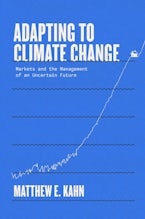How the Trump Administration's FEMA Policy Reform Will Accelerate Disaster Resilience
The Lucas Critique Has Bite in 2025!!
In late June 2025, NPR Reports;
“President Trump says the Federal Emergency Management Agency, FEMA, should be eliminated, and that states should take on more responsibility for responding to and preparing for extreme weather and other disasters.”In this Substack, I outline the beneficial incentive effects of decentralizing disaster responsibilities. The Trump Team is still deliberating on its strategy here.
First, I do not support the complete elimination of the Federal FEMA. My 2026 vision for the new FEMA is for it to be a streamlined agency with a smaller budget that focuses on knowledge creation and dissemination, as well as Big Data collection. Federal FEMA should concentrate on being a knowledge hub in terms of collecting satellite data on severe weather and doing some data cleaning and data analysis to inform the state-level disaster teams in charge of helping the local population prepare when the next violent storm unfolds. Federal FEMA should also convene national and international conferences to learn best practices in how to adapt to violent storms cost-effectively. Federal FEMA could also solve the coordination problem of convening meetings between entrepreneurs who have innovative risk mitigation solutions to market with possible clients in Alabama or California. FEMA could also work with the Army Corps of Engineers to audit specific areas within a state, offering a third-party assessment of the challenges the location faces to reduce its hurricane, tornado, and wildfire risk.
I do support the complete retreat from FEMA financing rebuilding areas and offering generous financial $ transfers after disasters. Up-front disaster preparation investments and ex-post disaster clean-ups should be paid by city and state budgets.
Consider California and the Los Angeles Fires of January 2025. If the city and the State knew that it would be 100% responsible for any wildfire $ damage, then this would sharply increase disaster mitigation incentives. Governor Newsom and Mayor Karen Bass would have been much more pro-active to take many steps regarding vegetation clearance, structure of insurance contracts, local land use zoning codes, the allocation of water, the quality of firetrucks, nudging communities of adjacent homes to take pro-active fire mitigation steps, fast tracking redevelopment of older homes that are more fire prone and many other steps. These elected officials would anticipate that if a terrible wildfire were to occur, then insurance prices would soar and local budget deficits would increase. These elected officials would have much stronger ex-ante incentives to proactively take steps to protect vulnerable areas and to encourage economic activity to move to “higher ground” to areas facing less wildfire risk.
Consider local voters and property owners in Los Angeles and California. Suppose these individuals recognize that FEMA has been phased out. In that case, they will demand more effort from their elected officials to do their job and to be “adults” who proactively invest in community disaster safety.
The Lucas Critique teaches us that as the “rules of the game change”, people reoptimize. President Trump’s FEMA policy represents an excellent test of the Lucas Critique’s relevance in 2025!
Claims are being made that home prices will decline sharply in disaster impacted areas. This scenario could unfold under “business as usual”. The logic of the Lucas Critique rejects this claim. As I discuss in my book Adapting to Climate Change, markets will be used (unless Government intervention crowds out this dynamic) to allocate properties to those with an edge in handling the risk and they will seek out new strategies to protect their assets from disaster risks that we increasingly understand. Adaptation optimism due to market forces!
Here is a 20 minute video from 2021 where I discuss my book.
As local property owners and their communities invest more in disaster resilience for disasters that actually strike their areas, this will raise local real estate prices, and the localities will collect more tax revenue. Investing in resilience is somewhat akin to remodeling a bathroom. The value of real estate depends on “location, location, location”. If some areas face greater risk, then either build less real estate there or figure out strategies to protect that real estate. The private sector solves problems that people are willing to pay to have solved!
Finally, economists should note that the Trump Administration is considering privatizing the GSEs. I support this move. There is a complementarity here between privatizing the GSEs and defunding FEMA. The Federal Government should retreat from subsidizing real estate investment. Private investors are more likely to do their homework if there is no Federal Safety Net.




I'm sympathetic to this, but do see a role for FEMA in coordinating the logistics of interstate disaster response (in addition to the roles you mention).
Another dimension of state response is private hazard insurance with companies able to set rates according to forward-looking assessment of risks and vulnerabilities.
Both will require additional investment in -- certainly not scaling back -- climate and earth science data gathering and modeling.